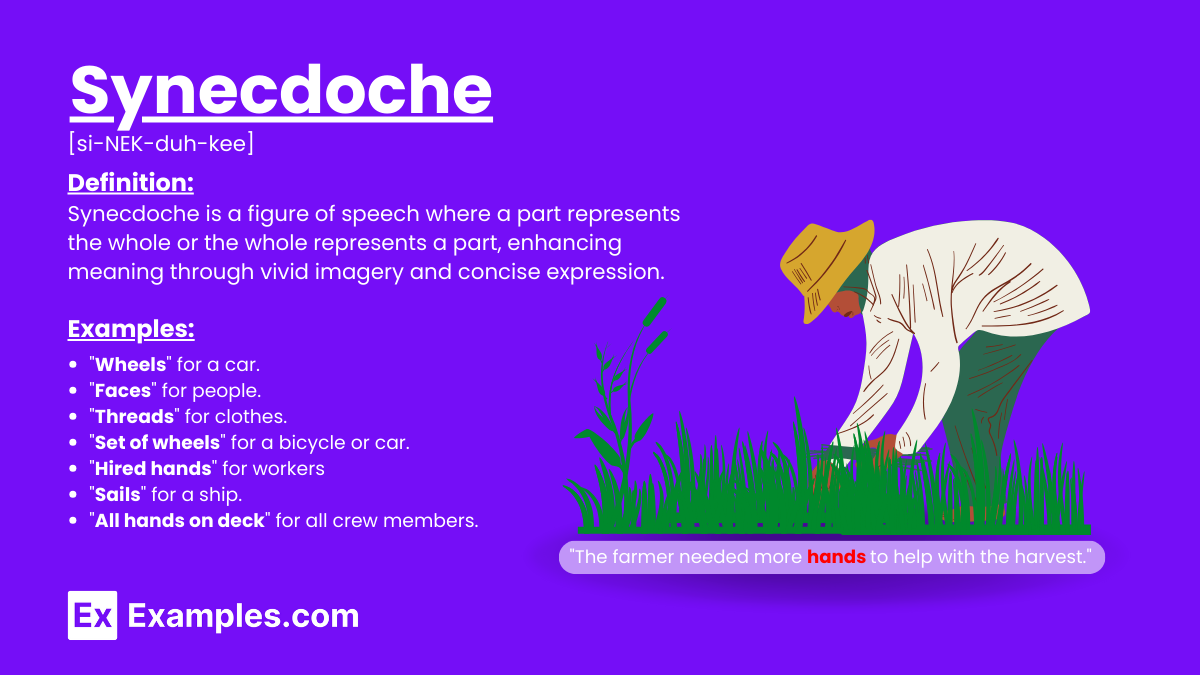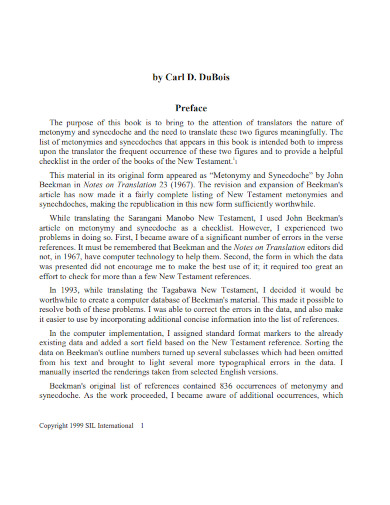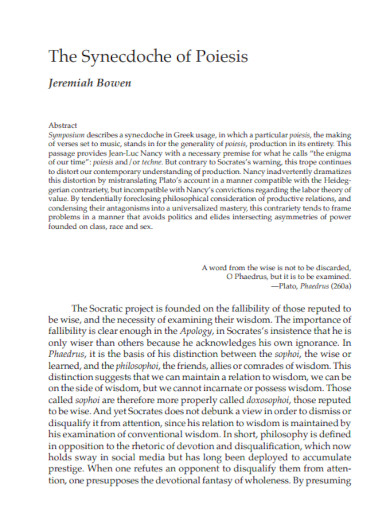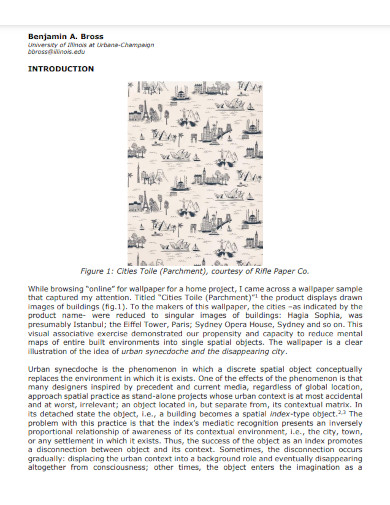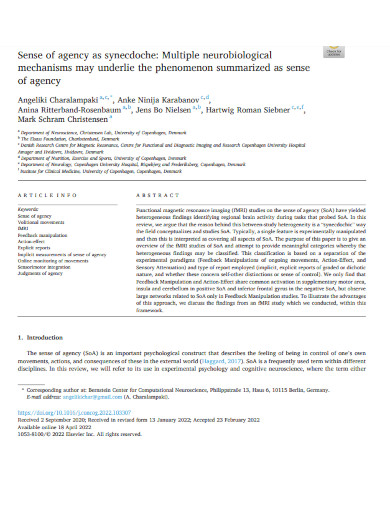60+ Synecdoche Examples
Synecdoche is a literary device where a part represents the whole or vice versa. This figure of speech enriches language by allowing concise, vivid descriptions. Commonly found in poetry and prose, synecdoche creates strong imagery and emphasizes particular aspects of subjects. For example, saying “all hands on deck” uses “hands” to represent sailors, highlighting their role and presence on a ship.
Writing is a hard skill that will allow the person to have written outputs like books, poems, and research. Literary devices are a technique one can use to augment one’s writing, one of which is called synecdoche.
What is Synecdoche?
Synecdoche is a figure of speech where a part represents the whole or the whole represents a part. Examples include “all hands on deck,” meaning sailors, or “the White House announced,” referring to the U.S. administration. This device creates vivid imagery and concise expression, enhancing reader engagement by substituting a component or characteristic for the entire entity.
Examples of Synecdoche
Synecdoche Examples in Literature
Synecdoche is a figure of speech in which a part is made to represent the whole or vice versa. Here are some examples of synecdoche in literature:
- William Shakespeare’s “Julius Caesar”:
- “Friends, Romans, countrymen, lend me your ears.”
- Here, “ears” represent the whole audience’s attention.
- Homer’s “The Odyssey”:
- “All hands on deck.”
- “Hands” refers to sailors, meaning all crew members should come on deck.
- William Shakespeare’s “Hamlet”:
- “The serpent that did sting thy father’s life / Now wears his crown.”
- “Crown” refers to the kingship or the king himself.
- John Donne’s “The Flea”:
- “And pampered swells with one blood made of two, / And this, alas, is more than we would do.”
- “Blood” represents their shared life or union.
- Samuel Taylor Coleridge’s “The Rime of the Ancient Mariner”:
- “The western wave was all aflame.”
- “Wave” refers to the sea.
- William Blake’s “London”:
- “The mind-forged manacles I hear.”
- “Manacles” represent restrictions on freedom.
- Emily Dickinson’s “Because I could not stop for Death”:
- “We paused before a House that seemed / A Swelling of the Ground—”
- “House” refers to a grave.
- T.S. Eliot’s “The Love Song of J. Alfred Prufrock”:
- “I should have been a pair of ragged claws / Scuttling across the floors of silent seas.”
- “Pair of ragged claws” refers to a crab.
- William Shakespeare’s “Macbeth”:
- “Take thy face hence.”
- “Face” represents the entire person.
- William Wordsworth’s “The Prelude”:
- “Bliss was it in that dawn to be alive, / But to be young was very heaven!”
- “Dawn” represents the beginning of a new era or the French Revolution.
Synecdoche Examples Sentences
“All hands on deck!”
- Here, “hands” refers to sailors or crew members.
“The White House issued a statement today.”
- “The White House” refers to the President and his administration.
“He has many mouths to feed.”
- “Mouths” refers to people (typically family members or dependents).
“Lend me your ears for a moment.”
- “Ears” represents attention.
“She bought a new set of wheels.”
- “Wheels” refers to a car.
“We need all the brains we can get for this project.”
- “Brains” represents intelligent or knowledgeable people.
“The pen is mightier than the sword.”
- “Pen” refers to writing or communication, while “sword” represents military force or violence.
“The suits on Wall Street are at it again.”
- “Suits” refers to business executives or financiers.
“He scored five goals, leading his team to victory.”
- “Goals” refers to the instances of scoring in a game, representing the player’s contribution.
“Can you give me a hand with this?”
- “Hand” represents help or assistance.
Synecdoche Examples in Poetry
Synecdoche is a figure of speech in poetry where a part of something represents the whole, or vice versa. Here are examples of synecdoche in poetry:
- “Ozymandias” by Percy Bysshe Shelley:
- “The hand that mocked them and the heart that fed.”
- “Hand” and “heart” represent the entire person of Ozymandias, the king.
- “The Love Song of J. Alfred Prufrock” by T.S. Eliot:
- “I should have been a pair of ragged claws / Scuttling across the floors of silent seas.”
- “Pair of ragged claws” refers to a crab, representing the speaker’s feelings of insignificance.
- “To His Coy Mistress” by Andrew Marvell:
- “But at my back I always hear / Time’s wingèd chariot hurrying near;”
- “Time’s wingèd chariot” represents the abstract concept of time passing quickly.
- “Kubla Khan” by Samuel Taylor Coleridge:
- “In Xanadu did Kubla Khan / A stately pleasure-dome decree:”
- “Pleasure-dome” represents the entire palace and the grandeur of Kubla Khan’s reign.
- “The Flea” by John Donne:
- “And pampered swells with one blood made of two, / And this, alas, is more than we would do.”
- “Blood” represents the union and shared life of the lovers.
- “The Rime of the Ancient Mariner” by Samuel Taylor Coleridge:
- “The western wave was all aflame.”
- “Wave” represents the entire sea or ocean.
- “London” by William Blake:
- “The mind-forged manacles I hear.”
- “Manacles” represent the broader concept of mental and societal restrictions.
- “Because I could not stop for Death” by Emily Dickinson:
- “We paused before a House that seemed / A Swelling of the Ground—”
- “House” represents a grave.
- “The Road Not Taken” by Robert Frost:
- “Two roads diverged in a yellow wood,”
- “Roads” represent life choices or paths.
- “Sonnet 18” by William Shakespeare:
- “So long as men can breathe or eyes can see,”
- “Eyes” represent people or humanity as a whole.
Synecdoche Examples in Movies
Synecdoche in movies involves using a part of something to represent the whole, or vice versa, to create powerful imagery and meaning. Here are some examples of synecdoche in movies:
- “Jaws” (1975)
- The fin of the shark represents the entire shark.
- The iconic image of the fin cutting through the water evokes fear and symbolizes the lurking danger.
- “The Wizard of Oz” (1939)
- Dorothy’s ruby slippers represent her journey and the power to return home.
- The slippers symbolize hope, magic, and the fulfillment of wishes.
- “Star Wars” (1977)
- Darth Vader’s mask represents his entire character and the fear he instills.
- The mask symbolizes his authority, menace, and the dehumanization of the character.
- “Titanic” (1997)
- The iceberg represents the entire disaster.
- The visible tip of the iceberg symbolizes the hidden dangers and the catastrophic event.
- “The Godfather” (1972)
- The Corleone family’s mansion represents their power and influence.
- The mansion symbolizes wealth, authority, and the reach of the family’s control.
- “The Dark Knight” (2008)
- The Joker’s smile represents his chaotic and unpredictable nature.
- The smile symbolizes madness, danger, and the character’s twisted philosophy.
- “Schindler’s List” (1993)
- The girl in the red coat represents the innocence of all Holocaust victims.
- The red coat stands out in the black-and-white film, symbolizing lost innocence and the horrors of war.
- “Forrest Gump” (1994)
- The feather at the beginning and end of the film represents fate and destiny.
- The feather symbolizes the randomness of life and the idea of destiny guiding Forrest’s journey.
- “Inception” (2010)
- The spinning top represents the concept of reality versus dreams.
- The top symbolizes Cobb’s quest for truth and his struggle to distinguish between reality and the dream world.
- “Up” (2009)
- The house lifted by balloons represents Carl’s memories and attachment to his past.
- The house symbolizes love, loss, and the journey of moving forward while honoring the past.
Synecdoche Examples in Songs
Synecdoche in songs can create powerful imagery and deepen the meaning of lyrics by using a part to represent the whole or vice versa. Here are some examples of synecdoche in songs:
- “All the Single Ladies” by Beyoncé
- “If you liked it, then you shoulda put a ring on it.”
- “Ring” represents marriage or commitment.
- “Take Me Home, Country Roads” by John Denver
- “Country roads, take me home / To the place I belong.”
- “Country roads” represent the entire rural environment and the feeling of home.
- “The Wall” by Pink Floyd
- “All in all, you’re just another brick in the wall.”
- “Brick” represents an individual in a conformist society or system.
- “Another One Bites the Dust” by Queen
- “Another one bites the dust.”
- “Bites the dust” represents death or defeat.
- “Rolling in the Deep” by Adele
- “You could have had it all / Rolling in the deep.”
- “Rolling in the deep” represents profound emotional pain and intensity.
- “Material Girl” by Madonna
- “We are living in a material world, and I am a material girl.”
- “Material world” represents a society focused on wealth and possessions.
- “Boulevard of Broken Dreams” by Green Day
- “I walk a lonely road / The only one that I have ever known.”
- “Lonely road” represents the journey of life filled with struggles and solitude.
- “Lucy in the Sky with Diamonds” by The Beatles
- “Lucy in the sky with diamonds.”
- “Diamonds” represent a fantastical, surreal world, often interpreted as a reference to LSD.
- “Stairway to Heaven” by Led Zeppelin
- “There’s a lady who’s sure all that glitters is gold / And she’s buying a stairway to heaven.”
- “Stairway to heaven” represents a path to spiritual enlightenment or fulfillment.
- “Blowing in the Wind” by Bob Dylan
- “The answer, my friend, is blowing in the wind.”
- “Blowing in the wind” represents an elusive or unattainable solution or truth.
Synecdoche Examples in the Bible
Synecdoche is a literary device frequently used in the Bible to convey deeper meanings through parts representing wholes or vice versa. Here are some examples of synecdoche in the Bible:
- Genesis 3:19 (NIV):
- “By the sweat of your brow you will eat your food until you return to the ground, since from it you were taken; for dust you are and to dust you will return.”
- “Brow” represents the entire body or person, emphasizing the toil and effort required for survival.
- Psalm 23:5 (NIV):
- “You prepare a table before me in the presence of my enemies. You anoint my head with oil; my cup overflows.”
- “Cup” represents abundance and blessings in life.
- Psalm 44:6 (NIV):
- “I put no trust in my bow, my sword does not bring me victory.”
- “Bow” and “sword” represent all weapons or military strength.
- Isaiah 2:4 (NIV):
- “He will judge between the nations and will settle disputes for many peoples. They will beat their swords into plowshares and their spears into pruning hooks.”
- “Swords” and “spears” represent all instruments of war, while “plowshares” and “pruning hooks” represent tools of peace and agriculture.
- Matthew 6:11 (NIV):
- “Give us today our daily bread.”
- “Bread” represents all physical sustenance or necessities of life.
- John 1:14 (NIV):
- “The Word became flesh and made his dwelling among us. We have seen his glory, the glory of the one and only Son, who came from the Father, full of grace and truth.”
- “Flesh” represents human nature or humanity as a whole.
- Romans 12:1 (NIV):
- “Therefore, I urge you, brothers and sisters, in view of God’s mercy, to offer your bodies as a living sacrifice, holy and pleasing to God—this is your true and proper worship.”
- “Bodies” represent the whole self or entire being.
- 1 Corinthians 10:17 (NIV):
- “Because there is one loaf, we, who are many, are one body, for we all share the one loaf.”
- “Loaf” represents the entire act of communion and unity among believers.
- Ephesians 6:12 (NIV):
- “For our struggle is not against flesh and blood, but against the rulers, against the authorities, against the powers of this dark world and against the spiritual forces of evil in the heavenly realms.”
- “Flesh and blood” represent human beings or humanity in general.
- James 3:6 (NIV):
- “The tongue also is a fire, a world of evil among the parts of the body. It corrupts the whole body, sets the whole course of one’s life on fire, and is itself set on fire by hell.”
- “Tongue” represents speech or language, and by extension, the power of words to influence and corrupt.
Synecdoche Examples about Love
Synecdoche is a figure of speech in which a part is used to represent the whole or vice versa. Here are some examples of synecdoche specifically about love:
- Heart:
- “She gave him her heart.”
- Here, “heart” represents her entire love and emotional commitment.
- Hand:
- “He asked for her hand in marriage.”
- “Hand” represents her entire person and the commitment of marriage.
- Eyes:
- “Her eyes met his across the room, and they instantly fell in love.”
- “Eyes” represent the entire act of noticing, feeling attraction, and beginning to fall in love.
- Voice:
- “I love hearing your voice.”
- “Voice” represents the entire presence and essence of the person speaking.
- Smile:
- “Her smile lit up his world.”
- “Smile” represents her whole personality and the joy she brings to his life.
- Name:
- “Every time I hear your name, my heart skips a beat.”
- “Name” represents the whole person and the emotions they evoke.
- Breath:
- “You are my every breath.”
- “Breath” represents the entire existence and vitality of the person.
- Lips:
- “He longed for her lips.”
- “Lips” represent the desire for her kisses and affection.
- Arms:
- “He found solace in her arms.”
- “Arms” represent the entire embrace and comfort of being with her.
- Voice Mail:
- “I saved all your voice mails.”
- “Voice mails” represent the memories and feelings associated with their relationship.
More Synecdoche Examples & Samples
1. Synecdoche and the Presidency
2. Metonymy and Synecdoche in the New Testament
3. Synecdoche of Poiesis Template
4. Urban Synecdoche and the Disappearing City
5. Synecdoche Two-Component Systems
6. Synecdoche Release Template
7. Sense of Agency as Synecdoche
Synecdoche vs. Metonymy
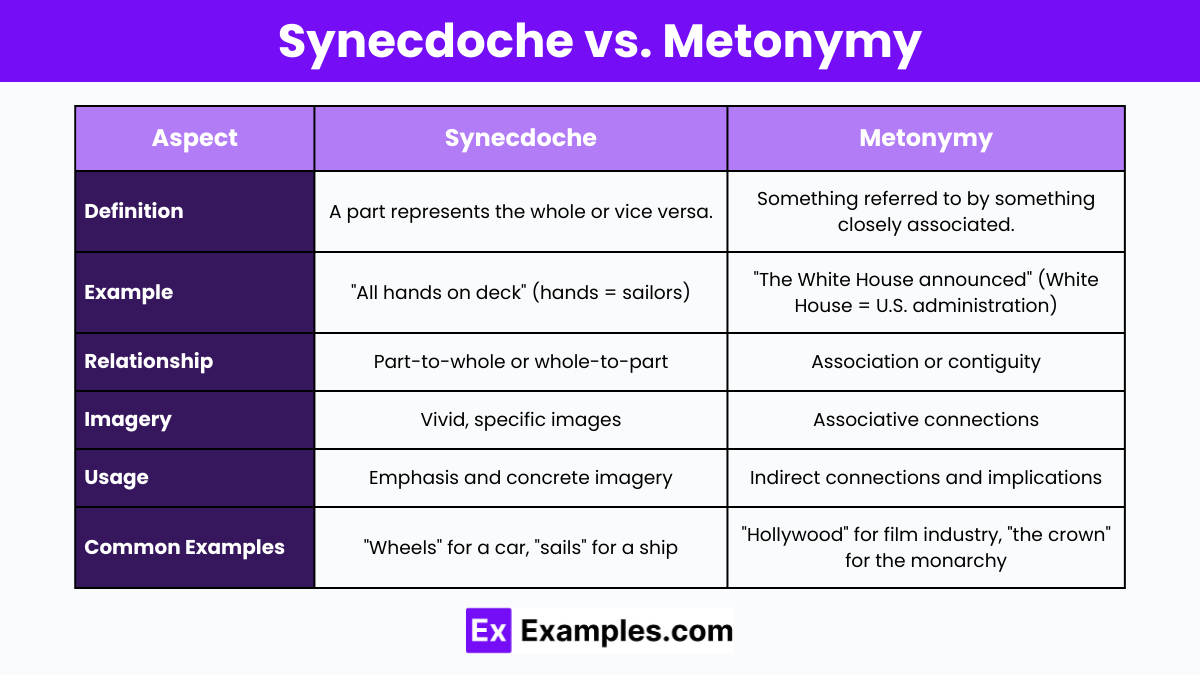
| Aspect | Synecdoche | Metonymy |
|---|---|---|
| Definition | A figure of speech where a part represents the whole or vice versa. | A figure of speech where something is referred to by the name of something closely associated with it. |
| Example | “All hands on deck” (hands represent sailors) | “The White House announced” (White House represents the U.S. administration) |
| Relationship | Part-to-whole or whole-to-part relationship | Association or contiguity between two entities |
| Imagery | Creates vivid, specific images by highlighting a component or characteristic | Creates imagery through associative connections rather than parts |
| Usage | Often used for emphasis and to create a direct, concrete image | Used to create connections and imply relationships indirectly |
Why is Synecdoche used?
Synecdoche is used for several reasons:
- Vivid Imagery: It creates strong visual images by highlighting specific parts or aspects of something.
- Conciseness: It allows for more concise expression by substituting a part for the whole or vice versa.
- Emphasis: It emphasizes particular elements or characteristics of a subject.
- Engagement: It engages readers by making descriptions more relatable and striking.
- Symbolism: It can add symbolic meaning, enhancing the depth and layers of interpretation.
How to Use a Synecdoche
Synecdoche is a literary device or a figure of speech that you can use to improve the quality of your writing. For example, a sonnet has a limited amount of words that can fit into a line similar to a haiku poem, one can use synecdoche to easily refer to something else, which will not compromise the whole poetic structure used in the poem.
Step 1: Identify and Outline the Usage of the Synecdoche
Begin by creating or using an outline or outline format for a synecdoche. This step will provide you with the necessary context and direction for your writing.
Step 2: Obtain or Research a List of Synechdoches
After you have identified and outlined your usage of the synecdoche, you must obtain and research a list of synecdoches and related entities or words. This will allow you to have a salient synecdoche template for you to use in your writing.
Step 3: Insert the Synecdoche Into the Written Output
The synecdoche will act as a noun, this means it should only occupy the noun slot in a specific sentence or statement. Strategic usage of synecdoche will allow the person to improve their written outputs.
Step 4: Repeat the Above Steps, Until Satisfied
After you have inserted the synecdoche in your writing, you may repeat the above steps until you are satisfied with the outcome. Be sure to moderately use synecdoche in one’s work as too many synecdoches will muddle the overall message and impact of the written output.
What is synecdoche?
Synecdoche is a figure of speech where a part represents the whole or the whole represents a part.
How is synecdoche different from metonymy?
Synecdoche involves part-whole relationships, while metonymy uses associations or contiguity.
Can you provide an example of synecdoche?
“All hands on deck” uses “hands” to represent sailors.
Why do writers use synecdoche?
Writers use synecdoche for vivid imagery, conciseness, emphasis, engagement, and symbolism.
Is synecdoche common in everyday language?
Yes, phrases like “wheels” for a car and “head count” for counting people are common synecdoches.
How does synecdoche enhance writing?
It makes descriptions more concrete, relatable, and impactful, enriching the reader’s experience.
What is the origin of the term synecdoche?
The term comes from the Greek word “synekdoche,” meaning “simultaneous understanding.”
Can synecdoche be confused with other literary devices?
Yes, it is often confused with metonymy due to their similarities in using substitutions.
Are there different types of synecdoche?
Yes, the main types include part-for-whole, whole-for-part, species-for-genus, and genus-for-species.
How can I identify synecdoche in literature?
Look for instances where a part represents the whole or vice versa, enhancing the text’s imagery and meaning.



